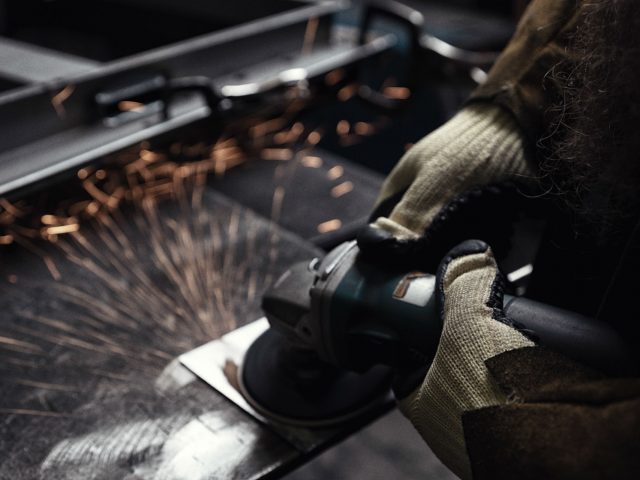In today’s global markets, custom sheet metal fabrication techniques play an integral role in manufacturing processes. Advancements in fabrication technology have seen an expansion in its application combined with an increased demand for custom parts across multiple industries. It’s not an understatement, either, that nearly all industrial sectors are reliant on some degree of custom sheet metal fabrication in manufacturing.
Knowing the process of sheet metal fabrication, what it is, the industries it affects, and its techniques and capabilities can help any company with its precision and custom sheet metal fabrication needs.
What is Sheet Metal Fabrication?
Sheet metal fabrication is a process that shapes a metal sheet into a custom part by either selectively removing material from the sheet or deforming the material to the desired shape. Sheet metal is classified by its thickness, or gauge, with raw stock measuring between 0.006 and 0.25 inches thick.
- Metals that are thinner are classified as “foil.”
- Thicker metals are considered “plate”.
- Gauge numbers typically range from 3 to 38—the higher the gauge, the thinner the piece of sheet metal.
Sheet metal is derived from a common raw material stock. It is available in many different types of metals—iron, copper, bronze, aluminum, steel, carbon steel, stainless steel, and magnesium to name a few. The metal used depends on the desired properties required of the application or product. Such properties as conductivity, tensile strength, hardness, flexibility, or corrosion resistance are commonly sought in sheet metal fabrication. The metal is formed into flat sheets by methods of extrusion, rolling or hammering. The process depends on the particular metal and its intended application, be it roof flashing or fuselage for aircraft.
Fabrication Techniques
Sheet metal stock is versatile and can be fabricated into nearly any shape. It can be cut, stamped, bent or stretched to desired proportions. Custom sheet metal fabrication techniques include such processes as material removal, creating holes and cutouts to particular geometric shapes, or deforming the sheet by stretching the material to different angles that exhibit complex contours. It can also be formed to the desired shape—the metal does not lose its mass in the process, only its form. Part size can range from brackets, screws, and washers to enclosures for durable goods like washing machines or engine blocks and aircraft wings.
Essentially, fabricating sheet metal into various shapes is performed by some type of forming or cutting.
- Forming is the act of applying force to material to reshape or plastically deform it. It bends and stretches the material into a desired shape—the part, component or finished product.
- Cutting is a fabrication process that applies shearing force to cut away and separate sections of the material to a desired part or component. Shearing force can be achieved by such methods as heat, plasma, laser, waterjet or abrasion to name a few.
That said, because of sheet metal’s versatility, it offers many custom fabrication techniques. The material can be cut, rolled, bent, and forged. It can be prepared for laser cutting and punching, braking, galvanizing, welding (Stick, MIG, TIG, Spot or Stud), press forming, painting, powder coating, stamping, riveting, punching, assembling, sub-contract manufacturing, prototyping, machine design, and technical drawing.
Industries Served
With technological advancements in design, custom sheet metal fabrication techniques are regularly used in a variety of industries. Custom parts and components serve the aerospace, automotive and transportation, industrial electronics, consumer electronics, medicine, consumer products and durable goods, construction, architecture, HVAC industries and much more.
The processes for custom sheet metal fabrication require precision. Performed by skilled craftsmen, for high production, with little tolerance for error, custom fabrication is as much an art form as it is an act of engineering and science. Common products like screws, nails, cutlery, pipes, cans, pots and pans are all a result of custom sheet metal fabrication. But so are commercial kitchen and restaurant equipment, elevators, screen doors, medical equipment, automotive, aircraft, and watercraft bodies, irrigation and drainage systems and equipment, guardrails along roadsides, mailboxes, the siding, roofing, and gutters for your house, the enclosures for your computer and monitors, ventilation systems, hoods and cabinets, and much more.
Custom sheet metal fabrication is a vital part of manufacturing processes worldwide. With its many industrial and commercial applications, the market for fabrication ranges from immense structural and architectural projects to delicate and intricate telecommunications systems and medical components—even parts in the manufacturing of toys. For more information or to answer any questions on how precision and custom sheet metal fabrication can fulfill your company’s requirements, contact Quest-Tech today.



